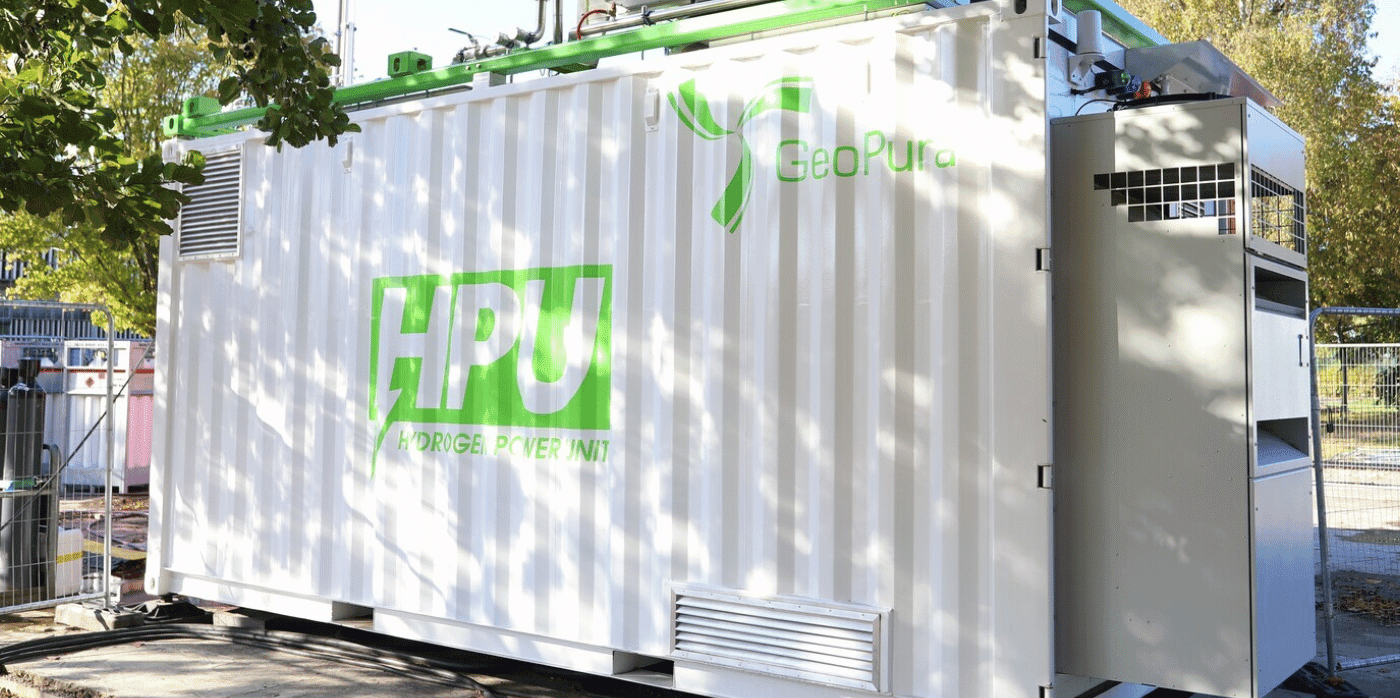Hydrogen generators for carbon-free electricity

Spotted: In the construction sector, 98 per cent of all energy comes from diesel, and fossil fuel generators are also commonly used in a range of other settings such as outdoor live events. In addition to greenhouse gas emissions, diesel generators produce air pollutants harmful to human health, as well as disruptive noise. As a result, companies are increasingly looking for alternative methods for powering their sites.
One promising technology for the future of site energy is hydrogen power, and UK startup GeoPura has successfully trialled the technology on two UK infrastructure projects (National Grid’s Viking Link interconnector project and HS2), potentially paving the way for its wider adoption.
Following ten years of research and development, GeoPura has developed its Hydrogen Power Unit (HPU), which combines hydrogen fuel cell technology with battery storage and real-time electrical conversion. The fuel cell splits the hydrogen into protons and electrons, which creates an electrical current that charges the batteries. The batteries, in turn, provide power to the site for applications such as electric vehicle charging, heating, and hot water. The HPUs are housed in a 20-foot portable shipping container, and it generally only takes a few hours to set up the system. The hydrogen fuel is delivered by HGVs.
Hydrogen is attractive as a fuel because it only emits water vapour at the point of use. If the hydrogen is produced sustainably, the whole system is carbon-free. GeoPura produces its own green hydrogen by using electricity from renewable sources to split water into hydrogen and oxygen. It then tops up its own supply with hydrogen purchased from natural gas producers (which is not emissions-free).
Springwise has spotted various ways that sites could produce and store their own green power, including using volcanic rock cells and spent electric vehicle (EV) batteries.
Written By: Matthew Hempstead

